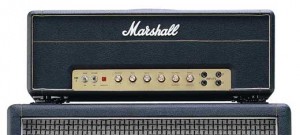This is a Guest Post by Guitarist and Published Author, Brian Reed.
 Who hasn’t heard Albert, B.B. or Freddie King, Muddy Waters, Buddy Guy, or Eric Clapton and thought, “Damn, I want my guitar to sound like that.”
Who hasn’t heard Albert, B.B. or Freddie King, Muddy Waters, Buddy Guy, or Eric Clapton and thought, “Damn, I want my guitar to sound like that.”
There is no blueprint for good blues tone. Since there are so many distinct blues styles, there are likely iconic bluesmen that have used a setup similar to yours. Blues legends have used single coil and humbucker-based guitars, tube and solid-state amps, pedals and just plugging straight into the amp. Here are some rules of thumb that can help you get good tone no matter your setup.
Great blues guitarists know just how to manipulate their guitars to get multiple different evocative tones. They use the pickup selection, tone and volume knobs on their guitar to change tone rather than changing channels on their amp or using a pedal.
If you have a dual humbucker guitar, familiarize yourself with the way the guitar sounds using both the neck and bridge humbuckers. Then, experiment with rolling off the volume and see how it impacts the sound. Some blues players have the volume on their neck pickup rolled back for rhythm and the bridge pickup volume all the way up for solos. Other players may have both volumes on full and use the neck pickup for slower, vocal-sounding solos, then switch to the bridge for more sustained, singing or trebly, biting solos.
For Strat-style guitars, listen with how the tone changes when you move between the five different pickup positions and the ways they can affect the emotional impact of a solo. Most Strat-style guitars don’t have multiple volume knobs to set different pickups at different levels, but you can still manually roll the volume back while playing rhythm and bring the level back for solos.
Dial your amp’s gain or volume so that when your guitar’s volume is set at 10, the amp has a nice singing sustain. Blues doesn’t typically incorporate over the top high gain, but you want a tone that has a nice vocal quality to it and that requires a little overdrive. If you don’t know where to begin, start with all the knobs at 12 o’clock and then you can adjust the gain up from there. Most tube amps sound best when the volume is pushed to create natural overdrive rather than adding distortion.
Pedals aren’t essential for blues but some players will add a touch of amp reverb or tremolo to their signal. However, more dynamic effects like delay, chorus or other modulation effects aren’t necessary.
Some players also use an overdrive or other type of boost pedal to push their solos to another level. There are hundreds of Tube Screamers clones, first popularized by Stevie Ray Vaughan, which can add a throaty, midrange voiced overdrive to your tone. Or, if you have a darker sounding amp, like a Marshall, you might look for a treble booster like the Dallas Rangemaster pedal similar to what Eric Clapton used with his Marshall Bluesbreaker. There are lots of boost pedals on the market that have transparent characteristics, but give a little extra push to the front end of the amp to enhance the sound.
Whatever your setup, it is important to remember that great blues tone is much more about feel and emotion than expensive gear.
 Amps
Amps Pedals
Pedals